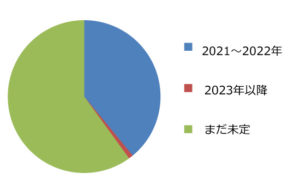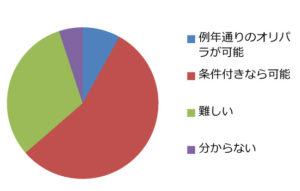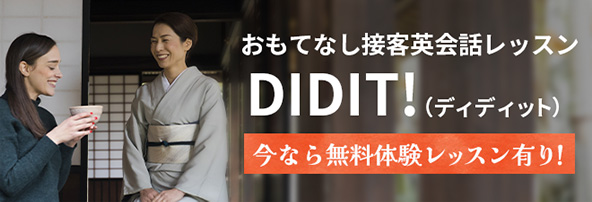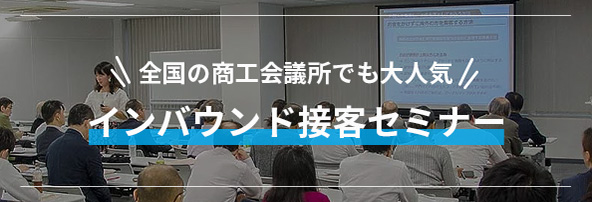外国人114人へのオンライン個別インタビュー結果 〜東京2020今夏開催「難しい」31%、「条件付きで可能」55%〜
外国人114人へのオンライン個別インタビュー結果
〜東京2020今夏開催「難しい」31%、「条件付きで可能」55%〜
飲食店インバンド専門家をしております、株式会社華ひらくの内木美樹です。
この度、新しい外国人インタビューの結果がまとまりましたのでお知らせします。(本来は都内で訪日観光客を対象に街頭インタビューを行っているのですが、今回は全てオンラインでの聞き取り調査です。)
新型コロナウイルスが中国から始まったことで、昨年は各国でアジア人への差別報道がありました。それにより、アジア人への偏見が、アジア旅行への懸念へと繋がると予想しました。
また、共同通信社が今年の1月9~10日に全国電話調査した結果では、「約8割の日本人が東京2020の今夏開催に反対」とありました。しかし、外国人のオリパラへの興味関心や2021年の夏に開催される事への意見は、ホスト国の日本とは違う結果が出ると考えました。
そこで弊社では、2020年10月~2021年2月にかけて、114人の外国人に Cambly 上で1対1による個別のインタビューを行い、以下の質問を投げかけました。
- 1.(COVID-19 は中国発祥と言われているが、)中国に程近い日本に数年以内に旅行する事に抵抗はあるか?
- 2.(1で「いいえ」を選んだ方のみ)数年以内に訪日予定はあるか?
- 3.2021年の夏に東京2020が予定されているが、開催は可能と思うか?
1.(COVID-19 は中国発祥と言われているが、)中国に程近い日本に数年以内に旅行する事に抵抗はあるか?
こちらの回答は、96%の人が「抵抗はない」と答えました。その多くがこのような理由からでした。
- 「日本を含むアジア諸国の方が母国よりもウイルスを制御できている」
- 「日本はルールを守る国だから」
- 「旅行自体が不安なだけで、日本が特に怖いという感情はない」
- 「ワクチンが出来て世界が海外旅行をOKとするなら、訪日旅行は怖くない」
- 「日本は世界でも有数の安全な国だと思う」
- 「日本人はみなマスクしてるし、街は清潔だし席同士のソーシャルディスタンスを確保していて人々が注意深い。ただ、地下鉄は躊躇するかな。」
- 「日本が安全どうこうではなく、自分自身がコロナを恐れていない。」
- 「今は世界中に広がっているし、日本はヘルスやテクノロジーでも先進国だから。」
一方で、訪日の躊躇をしている4%の意見は、このような理由からでした。
- 「日本の政府はもっと対応できる国だと思っていた」
- 「人口の多い国だから」
- 「怖くはないが注意深くはなる」
- 「日本の政府がよくやっているという話を聞かない」
- 「政府が無能すぎる」
(1で「いいえ」を選んだ方のみ)数年以内に訪日予定はあるか?
次に1で「抵抗はない」と答えた方に、訪日の予定を伺いました。その結果が左のグラフです。
 金銭的や心理的不安から、約6割の人は「未定」と答えましたが、約4割は「今年か来年」と回答。中には「出来るだけ早く行きたい」という方も複数いました。
金銭的や心理的不安から、約6割の人は「未定」と答えましたが、約4割は「今年か来年」と回答。中には「出来るだけ早く行きたい」という方も複数いました。
詳しく話を伺うと、その4割の内の大半は、「本当は今年(もしくは去年)日本に行く予定だったから」という方々でした。
1と2の回答を合わせて考えても日本の人気や信頼は衰えておらず、ワクチンが普及し、隔離なしで海外旅行ができる様になれば、再び訪日観光客を見込めると期待できます。
2021年の夏に東京2020が予定されているが、開催は可能と思うか?
そして最後に、今年の夏に開催予定の東京2020の可能性について質問したところ、右の結果が出ました。
 最も多かったのは全体の55%で「条件付きなら可能」という回答でした。観客数や規模の縮小、ワクチンや検査以外として挙げられた、「新しいオリパラ」の条件やアイデアはこちらです。
最も多かったのは全体の55%で「条件付きなら可能」という回答でした。観客数や規模の縮小、ワクチンや検査以外として挙げられた、「新しいオリパラ」の条件やアイデアはこちらです。
- VRやオンラインでも楽しめる体制を
(選手へのインタビュー、選手村の見学などを無料と有料プランで分ける) - ゲームの勝敗を賭け、賞金を日本に寄付
- 身体的接触の多いスポーツは開催しない
- 各国の選手が他国の選手や関係者と試合当日まで接触しない体制づくり(例:全豪オープン)
- NBAを成功例として同じことを行えばいい
- 責任の所在を明確に
- 感染者数の少ない国からのみの選手受け入れ 等
一方で、「難しいのでは」と回答した31%の意見はこちらの通りです。
「世界中で経済的危機が起こっているので、どの国もオリパラにお金を使う余裕がない」
「ワクチンの安全性が確約されていない」
「世界中で感染者数を抑え込むには時間が必要」
「日本は超高齢化社会だから」
「日本政府が最善を尽くしているようには思えない」
「全選手や関係者にワクチン接種を課すのは現実的ではない」
「すべての国からアスリートを迎えるのは難しいのでは」
「そもそも準備ができないし、アスリートや関係者、その家族を危険に晒してまでというのは…」
「仮に日本がウイルスを抑え込めても、世界の状況を考えると夏の開催は非常に厳しいと思う」
「開催するとなれば、感染症対策として更なるお金を投資することになるわけだし、ホスト国としても経済的に厳しい」
「全てが予想できないし、解決策も見えていない」
「自分が参加予定だったフィンランドで2020年に開催予定のイベントが2021年に延期され、再度2022年に延びた。そう考えると、国際的なイベントを来年行うのはちょっと難しいのかなと思う」
「やっぱりスポーツはあの雰囲気も含めて楽しむものだと思うから、観客なしでオリパラをやることに意味があるのかと考えてしまう」
「経済よりも安全性。日本にどれくらいのワクチンが普及しているかにもよるし、軽視してはいけない。ウイルスは徐々に変化しているから、違う型のコロナウイルスが出てきてそれが広まったらどうする?今はまだ旅行するべきタイミングだと思わないし、航空業界が多くの人にオープンになるとも思わない。そうなると、価格の高騰が予想され、さらに行きづらくなる」
「3か月前なら『間違いなく可能』と言っていたけど、今は新種のウイルスも出てきているし、イギリス政府は前に進むよりもかなり守りに入っている。先に進まないようにしている。経済的にも非常に厳しい状況が続いている。オリパラに関する情報も全く入ってきていない。この状況では難しいと思う」
「世界が安全な状況ではないのに無理やり開催するのは、オリパラの精神に反するのでは?」
「2週間の隔離をせず、身体的接触の多いスポーツを開催するのは時期尚早。スポンサーも大々的にPRできないのでは」
「日本人の観戦者のみという案も出ているが、それでは日本以外の国の選手にとってフェアではない」
まとめ
今回、海外の方と東京2020について意見交換をして最も感じたことは、熱量の差です。日本では連日開催についての是非が問われていますが、海外ではどの国の方に聞いても「言われて思い出した」程度でした。中には、延期になった事すら知らない方も複数いました。「最近、東京2020に関するニュースを見ましたか?」という質問には、誰一人として「はい」と答えなかったのが印象的でした。
また、全ての方と対話をしながら感じたのは、日本は感情的になりすぎて、論理的思考が欠如している事です。国民は反対か賛成かの2択ではなく、やる方法の模索を。政府は強硬姿勢を示すのではなく、どのような状態になっても臨機応変に対応できる様、具体的な対策とプランを複数用意し、それを分かりやすい形で国民に提示を。そして、ニュースを伝える側のメディアは、書き方一つで誘導も洗脳もできる力がマスコミにはある事を自覚した上で、国民に考える力をつけさせるような伝え方をしてほしいと強く思いました。
以上が今回のインタビューの結果と、私の総括的な考えでした。
華ひらくは飲食店専門の接客英会話コンサルタントです。インバウンド(訪日外国人や訪日外国人旅行者)が増える中、外国人に対しての接客英会話は、広く求められております。当社の代表である内木美樹は、アメリカ・ネバダ州の国際ホテル「Peppermill Resort Hotel」内のレストランで、日本人が誰もいない環境の中、マネージャーから「No. 1 food server」と称された実績があります。
その知識と経験を活かし、飲食店の方々に出張型の英会話レッスンを行っております。飲食店に特化したレッスン内容になりますので、多くの飲食店様からご好評いただいております。レッスンは基礎レッスンから行いますので、英語がチンプンカンプンという初心者の方でも安心して受講してください。
商工会議所様等でご好評いただいている飲食店向けインバウンド接客セミナーはこちら

written by 内木 美樹(飲食店インバウンド専門家/飲食店専門の英語講師)




